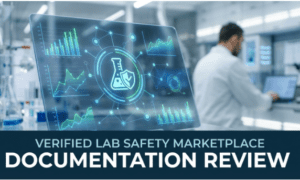Introduction
The decision to pursue an autism assessment can be both empowering and anxiety-inducing. Whether you’re a parent navigating the early signs in your child or an adult seeking answers after years of unexplained challenges, preparing for the assessment process is an important first step. Understanding what to expect, what to bring, and how to mentally and emotionally approach the evaluation can make the entire experience smoother and more insightful.
Preparation plays a critical role in helping clinicians get an accurate and complete picture of the individual’s behaviors, traits, and experiences. A well-prepared assessment session can lead to more effective outcomes, appropriate recommendations, and increased confidence in the results.
This guide is designed to help both parents and adults prepare for an autism assessment, focusing on practical, emotional, and informational readiness. With thoughtful planning, individuals of all ages can approach the process feeling informed, supported, and empowered.
Know What the Assessment Entails
An autism assessment—also referred to as an ASD assessment—is a structured evaluation conducted by trained professionals to determine whether a person meets the criteria for autism spectrum disorder. While the specific tools and approaches may vary, most assessments include several key components:
- A detailed developmental or personal history
- Behavioral observations
- Standardized diagnostic tools
- Interviews with the individual or caregivers
- Sometimes input from teachers, partners, or family members
For a child autism assessment, the focus is often on observable behavior, play interaction, and developmental milestones. In contrast, an adult autism assessment typically includes more in-depth interviews and self-reflection, along with analysis of lifelong behavioral patterns.
Understanding the general structure of the process can help you know what kinds of information will be most useful to bring along and share with the evaluating team.
Gather Relevant Background Information
Being prepared with the right information can significantly enhance the accuracy of the assessment. The more context evaluators have, the better they can tailor the process to the individual being assessed.
For Parents Preparing a Child Autism Assessment
- Developmental milestones: Record when your child first walked, talked, or hit other key milestones.
- Behavior patterns: Note any repetitive behaviors, sensitivities, or unique responses to stimuli.
- Communication habits: Document how your child expresses needs, reacts to social situations, or uses language.
- Concerns from others: Collect feedback from teachers, daycare staff, or family members who observe your child in different settings.
- Medical history: Include any birth complications, previous diagnoses, or speech/language delays.
For Adults Preparing for an Assessment
- Childhood behavior recollections: Consider how you interacted with others, handled change, or managed sensory experiences as a child.
- Current challenges: Reflect on patterns in social relationships, career, or self-regulation that may indicate ASD traits.
- Journals or notes: If you’ve kept personal reflections about your behavior or emotions, bring them along.
- Third-party input: Ask someone who knows you well—such as a sibling, partner, or parent—if they’d be open to sharing their observations if needed.
Understand the Importance of Honesty and Self-Awareness
An accurate autism assessment relies heavily on honest self-reporting and transparent observations. This can be challenging, especially for adults who have spent years masking or adapting behaviors to fit social expectations. It’s important to let go of the desire to appear a certain way and instead focus on describing your true experiences, even if they seem minor or difficult to explain.
For parents, it can be tempting to highlight only the strengths or downplay concerns about your child. However, sharing the full range of behaviors—even the difficult ones—is vital for a thorough understanding.
Approaching the assessment with a mindset of openness and curiosity, rather than fear of judgment, sets the stage for a more authentic evaluation.
Prepare for Emotional Reactions
Preparing for an autism assessment isn’t just about gathering documents—it’s also about preparing emotionally. The process can bring up feelings of anxiety, uncertainty, or even grief, especially for adults confronting past experiences or parents facing the unknown for their child.
It can be helpful to acknowledge these emotions ahead of time. Understand that the assessment is not about labeling or placing limits—it’s about understanding unique traits and needs. This knowledge can lead to better strategies for support, communication, and growth.
Talking to a supportive friend, therapist, or trusted family member before the appointment can help manage emotional expectations. If you’re bringing your child, make sure they are also mentally prepared with a simple explanation of what the day will involve.
Clarify Your Goals for the Assessment
While the professional conducting the evaluation will lead the process, it’s useful to have your own goals in mind. Consider why you’re seeking an autism assessment in the first place.
- Are you hoping for clarity about past behaviors or relationships?
- Do you want access to educational support or workplace accommodations?
- Are you searching for personal understanding or direction?
Clearly defining your motivations can help you communicate more effectively during the assessment. It also allows the evaluator to offer recommendations that align with your needs—whether practical, emotional, or developmental.
Practical Tips for Assessment Day
Being practically prepared on the day of the autism assessment can reduce stress and allow you to focus more fully on the process.
What to Bring
- Notes, forms, and documents you’ve gathered
- A list of medications (if any)
- A comfort item for younger children
- Snacks and water for longer appointments
What to Expect
- Multiple interviews or evaluations over several hours or across more than one visit
- A mix of structured questions and open-ended conversations
- A quiet and supportive environment
What to Avoid
- Trying to present yourself or your child in an idealized way
- Over-preparing to the point of stress or burnout
- Withholding information due to embarrassment or fear of judgment
After the Assessment
The period following an autism assessment can bring its own set of questions and emotions. Results are not always immediate and may involve follow-up appointments or additional testing. It’s important to stay patient and give the professionals time to review all findings.
Once you receive results—whether confirming an ASD diagnosis or offering alternative insights—it can be helpful to take time to reflect. Consider what the information means to you, and begin exploring next steps. This might include therapy, educational support, or simply connecting with others who share similar experiences.
Organizations like AutismCare play a role in supporting individuals through the entire journey—from consideration of assessment to post-diagnostic support and resources.
Conclusion
Preparing for an autism assessment is a meaningful process that requires more than just showing up for the appointment. Whether you’re seeking a child autism assessment or an adult autism assessment, being emotionally, practically, and informatively ready makes a significant difference in the experience and outcome.
By taking the time to reflect on experiences, gather relevant details, and understand the goals of the assessment, individuals and families can approach the process with clarity and confidence. An autism assessment is not an endpoint—it’s a gateway to better understanding, more informed choices, and supportive pathways that empower individuals to thrive in their unique ways.





























